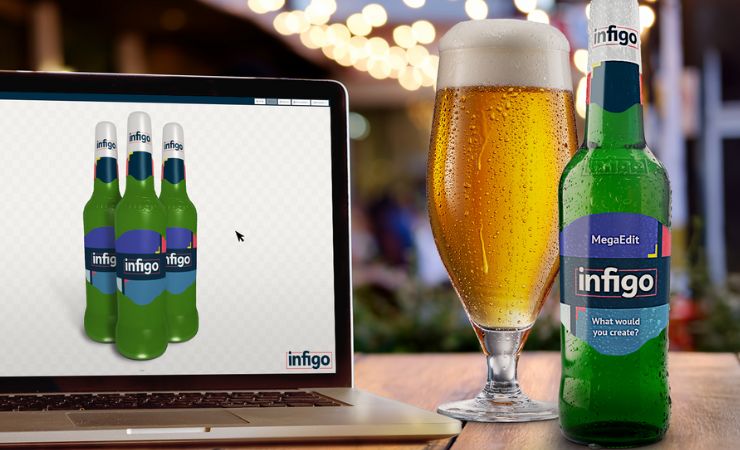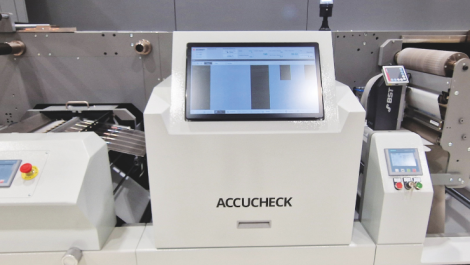E-commerce solutions that enable businesses to offer customisable packaging and label products online are essential to eliminate traditional bottlenecks by allowing customers to design, preview, and order their packaging materials directly from a website – as simple as ordering from Amazon. By Michal Lodej.
The evolution of e-commerce in the UK has opened up numerous new product opportunities for printers of packaging and labels – from custom printed postal boxes and envelopes to bespoke tissue paper and address labels.
However, one opportunity that not many are capitalising on yet is the ability to use their own websites as an active selling channel to reach new customers or upsell to existing ones. Converting online viewers, to real-life customers is an opportunity no printer can afford to miss out on.
Gavin De Boos, director, VB Media, an e-commerce platform for the print industry, said, ‘Today, a company’s website is so much more than an online version of their company brochure or shop window.
‘For print businesses who are just getting started in packaging, your webstore can enable you to offer a broader range of complementary packaging and labelling options to customers by outsourcing products that complement your existing offering.
‘For print providers who are already well established in packaging or labelling, your webstore can offer you opportunities to offer products that can be customised online. By integrating a print customisation tool into your website, you can enable your customers to customise or even personalise any of your standard products and preview them in 3D before they place their order with you.’
The e-commerce landscape for the packaging and labels industry is undergoing a transformative shift, driven by advancements in technology and changing consumer expectations. At the centre of this shift, web-to-print platforms have emerged as powerful tools, revolutionising the way packaging and label companies interact with clients and deliver their products.
For digital print providers, web-to-print tools highlight their unique capabilities, such as fast turnaround times, high-quality output, and the ability to handle short-run, highly customised orders efficiently.
By integrating user-friendly interfaces, these platforms empower businesses and customers alike. Small businesses, for instance, can create bespoke packaging designs without requiring a graphic design background, while larger enterprises can scale their branding efforts effortlessly. Web-to-print platforms’ visual proofing and editing features minimise errors and revisions, accelerating the production process.
One of the most significant advancements in the e-commerce packaging and label industry is the integration of web-to-print platforms with other business tools. These integrations—ranging from Customer Relationship Management (CRM) systems to Management Information System (MIS) solutions and shipping software—create a seamless workflow.
For example, integrating a web-to-print platform with an MIS ensures that orders are automatically tracked, inventory is updated in real-time, and production schedules are optimised. Automation minimises human error, improves efficiency, and ensures that businesses can handle increasing order volumes without sacrificing quality. Shipping integrations further enhance the customer experience by providing accurate delivery timelines and tracking updates.
Paul Bates, UK & global accounts sales manager, said, ‘At Hybrid Software we focus on all the heavy lifting in the back office when it comes to web-to-print. For the front end, we work with market-leading partners such as Infigo.’
Hybrid Software, Infigo and CERM will be partnering up at Packaging Innovations at the NEC, 12 – 13 February. At the show, you will be able to see a fully integrated and automated workflow from start to finish including Web-to-print front end, MIS job management and then PDF pre-flighting, managed artwork approval with live rotating 3D images, variable data printing and then production step and repeat files supplied to automatically to press.
Reduce the friction
By embracing integrations and automation, businesses can optimise their workflow to reduce operational costs and boost profitability. Automating repetitive tasks, such as pre-flighting files or processing payments, allows teams to focus on higher-value activities, such as customer service or product innovation.
Likewise, streamlined operations translate to faster order fulfilment, shorter lead times, and enhanced customer satisfaction. These factors not only drive repeat business but also improve brand reputation, attracting new clients.
Consider the time spent by a customer service representative or print operator reviewing each job to make job ticketing decisions. The Fiery Scribe, which according to print software developer Fiery, will be available early this year, automates this process by translating customer requests into machine-ready job tickets. This AI-powered tool interprets natural language job requests from emails and converts them into accurate job tickets. For example, a request like “I need 50 booklets with glossy covers” is automatically processed, with the system aligning job settings based on past similar tasks. This not only saves time but also reduces errors, enabling print shops to manage larger volumes of work more efficiently.
Fiery InkWise, a new cloud-based inventory management and ink ordering assistant that will also be available in the first quarter of 2025, leverages AI technology to tackle inventory management, crucial to avoiding wastage and production delays, The application intelligently learns from historical ink consumption patterns and forecasts when stocks will run low. Fiery InkWise alerts you and suggests appropriate reorder quantities and timing.
Global business
With a website, theoretically your customer each is limitless, crossing over boarders and boundaries. OnPrintShop’s upcoming v.12.0 will include AI-based website language translators with options of 19+ different languages, enabling printers to instantly translate the website content and solve the issue of language barriers in online shopping.
Although OnPrintShop’s web-to-print software is known for automating design personalisation using ready-to-use design templates, the latest release simplifies it further with the launch of AI-based ‘Designer Studio’.
With language translators for design texts and AI-driven image generators, this revamped tool is set to transform the design personalization process for customers.
The ‘Designer Studio’ will also allow customers to add premium effects to their print designs and get a 3D preview to visualize it in the real-world. Advanced finishes like embossing, debossing, foil and spot UV are some of the newly added effects.
Personalisation; the return
Recent numbers from Coherent Market Insights values the personalised packaging market at USD $36.23bn in 2024 and it his is expected to reach USD $51.32bn by 2031 being driven by a desire for unique and customised packaging that reflects consumers’ individuality.
Bobby Grauf, head of business development EMEA, Antigro Designer, commented, ‘Conversations with customers are showing demand for personalised products is still very much on the rise. It’s also clear that customers are willing to pay more for customised products. Research into personalisation from Deloitte has found that businesses willing to embrace personalisation have an opportunity to create an attractive proposition that may command a price premium and improve consumer traffic and conversion as well as help improve efficiency and reduce costs, offering additional sustainability benefits.
Personalisation tools and customisation software are constantly evolving and features like enhanced user experience (UX) and intuitive and smart features such as customer design review and 3D product reviews, all make it easy for business to be done online, regardless of the customer’s knowledge of the production process. These tools are now easily integrated into custom APIs and with popular e-commerce sales platforms like Shopify and WooCommerce, meaning it’s now extremely accessible for businesses to offer personalisation and customisation online, broadening their offering.’
Whichever direction a printer chooses to turn, there are some very clever technologies available to expiate the process of becoming a customer friendly print shop.






